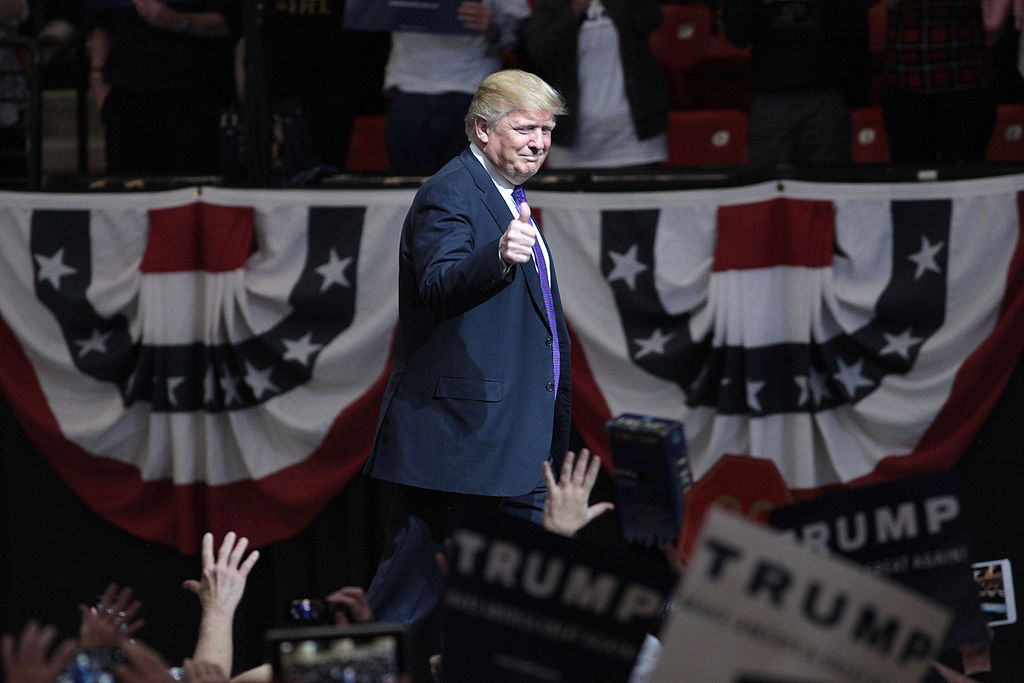Former President Donald Trump is turning his attention to the nation’s crumbling public transportation systems in 2025. As part of his infrastructure agenda, Trump’s funding proposals aim to modernize transit networks, expand accessibility, and boost economic productivity. However, critics have raised concerns about his prioritization of funding and the potential exclusion of urban areas historically dependent on federal support.
Modernizing Public Transit for Economic Growth
Trump’s vision for public transportation in 2025 includes a significant increase in federal spending to modernize aging infrastructure. According to White House insiders, the plan allocates billions for high-speed rail projects, electric buses, and the expansion of suburban transit networks. This marks a stark departure from previous administrations that emphasized urban transit systems in major cities like New York and Chicago.
Under this framework, Trump aims to prioritize rural and suburban areas that he claims were overlooked in past infrastructure initiatives. Advocates of the plan argue that expanding access to public transit in underserved regions could stimulate local economies, create jobs, and reduce dependency on personal vehicles.
Critics, however, argue that the exclusion of urban hubs may exacerbate transit inequities. Urban planners warn that neglecting dense cities, where millions rely on public transportation daily, could lead to worsening traffic congestion and hinder efforts to combat climate change.
Balancing Private Investments and Federal Oversight
A cornerstone of Trump’s proposal involves incentivizing private investment in public transportation projects. The plan encourages public-private partnerships (PPPs) to leverage private capital, promising tax breaks and subsidies for companies willing to invest in transit infrastructure.
Proponents of the PPP model highlight its potential to accelerate project timelines and reduce taxpayer burden. However, skeptics warn that excessive reliance on private funding could lead to increased fares, limited accountability, and prioritization of profit over public interest.
Trump has also proposed reducing federal oversight to streamline approvals for transit projects. While this move aims to cut bureaucratic red tape, transportation experts caution that it could compromise safety and environmental standards.
Social Media Reactions: Support, Skepticism, and Outrage
Public reaction to Trump’s public transit plan has been mixed, with many taking to social media to voice their opinions.
- @TransitForAll: “Finally! A president prioritizing rural transit needs. Urban centers already get enough attention. #TrumpTransit2025”
- @UrbanPlanner2025: “Neglecting cities like NYC in transit funding is shortsighted and dangerous. Millions depend on subways daily. #PublicTransitFail”
- @EcoWarrior99: “Electric buses are great, but ignoring urban transit undermines climate goals. Where’s the balance? #SustainabilityMatters”
- @MiddleAmericaMom: “Excited to see rural areas finally get the transit funding we deserve! Thank you, Trump! #Infrastructure”
- @DataDrivenPolicy: “PPP models sound good on paper but often lead to higher fares. Public transit must remain affordable. #PolicyMatters”
- @ClimateRealist123: “Streamlining projects is fine, but cutting oversight? That’s a recipe for disaster. #TransitSafetyFirst”



 Syria, Kurds and U.S. Race to Show Progress on SDF Integration Deal
Syria, Kurds and U.S. Race to Show Progress on SDF Integration Deal  U.S. Initiates $11.1 Billion Arms Sale to Taiwan Amid Rising China Tensions
U.S. Initiates $11.1 Billion Arms Sale to Taiwan Amid Rising China Tensions  Argentina Unions Rally Against Milei’s Labor Reform as Congress Debates Key Bill
Argentina Unions Rally Against Milei’s Labor Reform as Congress Debates Key Bill  Kevin Hassett Says Inflation Is Below Target, Backs Trump’s Call for Rate Cuts
Kevin Hassett Says Inflation Is Below Target, Backs Trump’s Call for Rate Cuts  Trump Administration Reviews Nvidia H200 Chip Sales to China, Marking Major Shift in U.S. AI Export Policy
Trump Administration Reviews Nvidia H200 Chip Sales to China, Marking Major Shift in U.S. AI Export Policy  Epstein Files Released by DOJ Spotlight Bill Clinton, Raise Questions Over Trump Mentions
Epstein Files Released by DOJ Spotlight Bill Clinton, Raise Questions Over Trump Mentions  Brazil Court Allows Bolsonaro Hospital Trip Amid Prison Sentence
Brazil Court Allows Bolsonaro Hospital Trip Amid Prison Sentence  Fernando Haddad Confirms He Will Not Run for Office in 2025, Signals Possible Exit as Brazil’s Finance Minister
Fernando Haddad Confirms He Will Not Run for Office in 2025, Signals Possible Exit as Brazil’s Finance Minister  Putin Envoy Heads to Miami for High-Stakes Talks as U.S. Pushes Ukraine Peace Deal
Putin Envoy Heads to Miami for High-Stakes Talks as U.S. Pushes Ukraine Peace Deal  Trump Announces $1,776 Cash Bonus for U.S. Military Personnel Ahead of Christmas
Trump Announces $1,776 Cash Bonus for U.S. Military Personnel Ahead of Christmas  U.S. Lawmakers Urge Pentagon to Blacklist More Chinese Tech Firms Over Military Ties
U.S. Lawmakers Urge Pentagon to Blacklist More Chinese Tech Firms Over Military Ties  Trump Administration Proposes Sweeping Limits on Gender-Affirming Care for Children
Trump Administration Proposes Sweeping Limits on Gender-Affirming Care for Children  Trump Defends Economic Record in North Carolina as Midterm Election Pressure Mounts
Trump Defends Economic Record in North Carolina as Midterm Election Pressure Mounts  U.S. Pushes New Gaza Governance Plan With International Force to Secure Ceasefire
U.S. Pushes New Gaza Governance Plan With International Force to Secure Ceasefire  U.S. and China Push for Ceasefire as Thailand–Cambodia Border Clashes Escalate
U.S. and China Push for Ceasefire as Thailand–Cambodia Border Clashes Escalate  Trump Signals Push for Lower Health Insurance Prices as ACA Premium Concerns Grow
Trump Signals Push for Lower Health Insurance Prices as ACA Premium Concerns Grow  U.S. Launches Large-Scale Airstrikes on ISIS Targets in Syria After Deadly Attack
U.S. Launches Large-Scale Airstrikes on ISIS Targets in Syria After Deadly Attack 





























